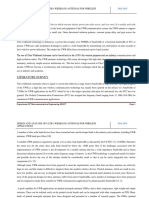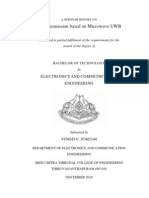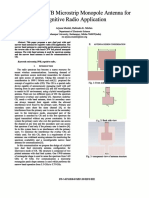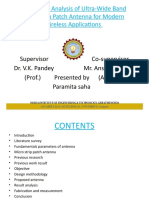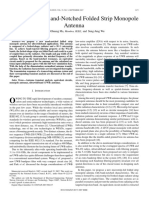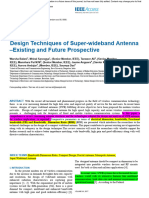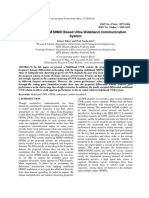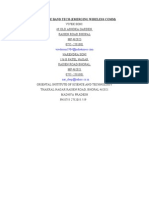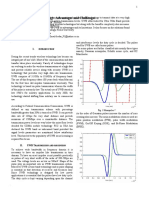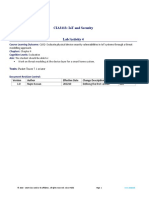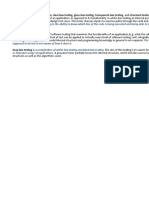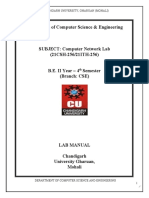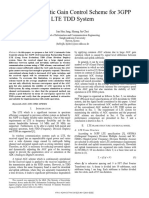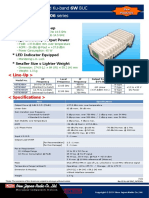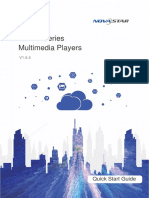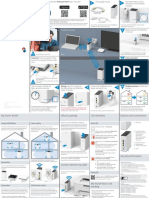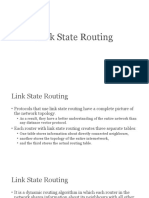London South Bank University
School of Engineering
BEng/BSc Project Arrangements Form
Session: 2022 - 2023
Student's full name:
Bader F Kh D M
I.D. Number
Full Address Term Home
Tel Number
E-mail: @lsbu.ac.uk
Course FT/PT Course Title/Option
Project title
Design and Analytical Framework of Printed UWB Antenna with Dual Band-
Notched Characteristics
Summary of project
The term "ultra-wideband" (UWB) refers to a specific kind of wireless communication that
employs very brief radio pulses or impulses (lasting for less than 1 nanosecond) to convey
large amounts of data. Due to its independence from a high-frequency carrier, this method
of short-distance data transmission goes by a variety of names, including carrier-free radio,
impulse radio, and base-band radio. Ultra-wideband technologies are defined as having a
constant fractional bandwidth of at least 1-3 GHz (UWB). Fractional bandwidth (Bf) is the
ratio of signal bandwidth ( Bs) to the central frequency, and it characterises the three main
types of bandwidths (narrowband, wideband, and ultra-wideband) (fc).
In this research, I design printed antenna for use in a CST, WiMAX/WLAN environment: a
truncated circular disc monopole and modified rectangular slot antenna. In order to achieve
UWB responsiveness, antenna structure have been modified to permit the overlap of
several modes. In order to conduct analysis of antenna using standard academic modelling
techniques, their features are compared to the FR4 experimental data. Research on fracture
analysis can benefit from the usage of this antenna.
�Project aims and objectives
In this project, I design printed antenna for use in a CST, WiMAX/WLAN
environment: a truncated circular disc monopole and modified rectangular slot
antenna.
Antenna structure have been modified to permit the overlap of several modes. In
order to conduct analysis of antenna using standard academic modelling techniques,
their features are compared to the FR4 experimental data.
In order to design an interface with a high fractional bandwidth, I must have a
thorough familiarity with the underlying principles and practises.
Finally, with the help of the CST model and design create a wideband that operates
between the ranges of antenna frequency 1-3 GHz. The antenna have a broad
bandwidth and should be made of FR4 technique and materials.
Expected outcomes
In the design of UWB systems, one of the fundamental goals, along with maintaining a
compact size and a stable gain, is the transmission of narrow pulses with a minimal amount
of dispersion. As a result, it was required for these antennas to either have an exceptionally
good transient response or a linear phase response in the frequency domain. The thesis
devotes a significant amount of space to discussing the time domain and frequency domain
characterization of the antennas.
Scope and challenges
In wireless broadband technologies, point-to-point or point-to-multipoint services are used
to transmit and receive data between a central hub and numerous endpoints. In certain
cases, point-to-point services are used instead of point-to-multipoint services. The
transmission and reception of data between customers and service providers is
accomplished via the use of radio waves in broadband wireless services. It guarantees a
wireless connection that is lightning fast at all times. Operating at a higher frequency as
compared to a lower one has a number of advantages, some of which include a wider-band
operation, antennas that are smaller, and installations that are less complicated. On the
other hand, high-frequency devices have a restricted range when operating in poor weather
conditions such as rain or fog. There are several variants of wide band wireless technology,
each of which has its own unique set of qualities.
The development of each and every wireless technology was motivated by the pursuit of a
� specific goal. There are a lot of different factors that go into determining the requirements
of different purposes, such as the data rate, the transmission distance, and the operational
power. Wireless systems may be distinguished from one another based on their operational
range. The restricted availability of radio frequency (RF) spectrum has led many people to
believe that ultra-wideband (UWB) technology might be a viable answer to this problem.
This is due to the fact that it enables the simultaneous operation of a large number of
wireless narrow band systems, which in turn makes it easier to launch brand new services.
Because of restrictions that limit the amount of power that may be broadcast by UWB
devices, narrow band systems are shielded from interference caused by UWB signals.
The low power of the ultra-wideband (UWB) signal, which is approximately 0.9 mW, is
spread out over a broad band width of 1-3 GHz (the FCC has allocated 3.1-10.6 GHz),
which results in a power spectral density of -35.45 dBm/MHz. This value is significantly
lower than that of the wireless narrow band systems that are currently in use. These
wireless systems are able to cohabit with UWB signals because they interpret the latter as
harmless background noise. As a result of this, UWB transmissions are not interfered with
by these systems. As a consequence of this, the only way for UWB systems to coexist with
other technologies is for them to be subject to very controlled constraints regulated by the
government.
University Supervisor Industrial Supervisor (if applicable)
Name: Name:
Signature: Signature: Date:
Tel No: Company Name and Address:
Date:
Tel No:
email:
Please return a completed form via the VLE. Also keep a copy for your reference.


